
|
Astronomy Picture Of the Day (APOD)
 NGC 2174: Emission Nebula in Orion
NGC 2174: Emission Nebula in Orion
8.12.2006
A lesser known sight in the nebula-rich constellation Orion, NGC 2174 can be found with binoculars near the head of the celestial hunter. About 6,400 light-years distant, the glowing cosmic cloud surrounds loose clusters of young stars.
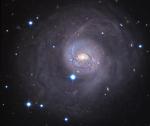 The Outskirts of M77
The Outskirts of M77
7.12.2006
Face-on spiral galaxy M77 lies a mere 60 million light-years away toward the constellation Cetus. Also known as NGC 1068, it's very bright core is well studied by astronomers exploring the mysteries of supermassive black holes in active galaxies.
 Spirit Rover on Mars Imaged from Orbit
Spirit Rover on Mars Imaged from Orbit
6.12.2006
If you have the right equipment, you can see the Spirit rover currently rolling across Mars. The right equipment, however, is currently limited to the High Resolution Imaging Science Experiment onboard the Mars Reconnaissance Orbiter (MRO). MRO arrived at Mars in March and just started science observations of the red planet last month.
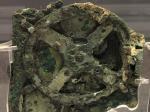 The Antikythera Mechanism
The Antikythera Mechanism
5.12.2006
What is it? It was found at the bottom of the sea aboard an ancient Greek ship. Its seeming complexity has prompted decades of study, although many of its functions remained unknown. Recent X-rays of the device have now confirmed the nature of the Antikythera mechanism, and discovered several surprising functions.
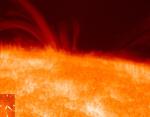 Movie: The Active Sun
Movie: The Active Sun
4.12.2006
Plumes of hot gas shoot across the surface on even an average day on the Sun. Such volatile activity was captured in dramatic detail recently by the new Hinode satellite launched by Japan in late September.
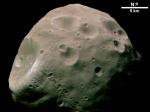 Phobos: Doomed Moon of Mars
Phobos: Doomed Moon of Mars
3.12.2006
This moon is doomed. Mars, the red planet named for the Roman god of war, has two tiny moons, Phobos and Deimos, whose names are derived from the Greek for Fear and Panic. These...
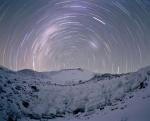 Star Trails at 19 000 Feet
Star Trails at 19 000 Feet
2.12.2006
In myth, Atlas holds up the heavens, but in this stunning view a mountain appears to serve as the southern night sky pivots around a snowy peak. Recorded during a climbing expedition...
 In the Arms of NGC 1097
In the Arms of NGC 1097
1.12.2006
A smaller companion seems wrapped in the spiral arms of enigmatic galaxy NGC 1097. This amazingly deep image of the peculiar spiral system, also known as Arp 77, actually combines data from two telescopes, one in the northern and one in the southern hemisphere of planet Earth.
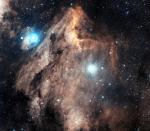 A Pelican in the Swan
A Pelican in the Swan
30.11.2006
The Pelican Nebula lies about 2,000 light-years away in the high flying constellation Cygnus, the Swan. Also known as IC 5070, this cosmic pelican is appropriately found just off the "east coast" of the North America Nebula (NGC 7000), another surprisingly familiar looking emission nebula in Cygnus.
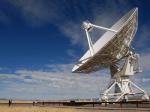 A Big Dish at the VLA Radio Observatory
A Big Dish at the VLA Radio Observatory
29.11.2006
They are so large, they are almost unreal. The radio dishes of the Very Large Array (VLA) of radio telescopes might appear to some as a strange combination of a dinosaur skeleton and common satellite-TV receiving dish.
|
January February March April May June July August September October November December |
|||||||||||||||||||||||||||||||||||||||||||||||||